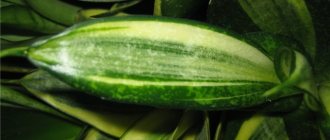Description
| Rose Lydia | |
| general characteristics | Rose spray |
| Plant height | 50-60cm |
| Flower size | 4-5cm |
| Color | Light pink |
| Bloom | From late May to mid October |
| Winter hardiness | Frost-resistant variety (up to -20ºС) |
- The name is rose Lydia (lat. Lydia).
- Group of varieties – spray rose.
- The variety was bred in 1995 in the Netherlands.
- Shape – erect, compact, well-leafed bush without thorns.
- Height – 50 – 60 cm.
- Width – 30 – 50 cm.
- The leaves are oval, dark green.
- The flowers are double, 4–5 cm in diameter, with a very light aroma, collected 10–15 pieces in one inflorescence. They change color intensity from light pink in sunny weather to deep pink in cloudy weather.
- Flowering is long, continuous, very abundant. The rose is one of the first to bloom and blooms until autumn.
- Lydia is very resistant to major rose diseases (late blight, powdery mildew) and pests, and is unpretentious in care.
- The variety is winter-hardy (up to -20 degrees) and needs shelter.
- Propagated by cuttings.
- Shrub rose Lydia includes three subspecies : spray rose Lovely Lydia, spray rose White Lydia, floribunda rose Classic Lydia.
The variety was bred as a greenhouse crop, but later it adapted perfectly to open space and gained great popularity among landscape designers. It is especially often used as border plantings and for decorating rose gardens.
Cuttings
Rose spray
The Lydia variety propagates well by cuttings (regardless of the subspecies and their characteristics). For propagation, take a cutting from the lower shoots with its own well-developed root system and 2 or 4 pairs of true leaves. The stem of the cutting must be cut at an angle of 45 °, kept in Kornevin solution (growth stimulator) for 2 hours and planted in a light substrate (peat, sand). Cover the top with a plastic bag, periodically removing it to harden the sprout. The best period for cuttings is from May to August. Already in the spring, you can carry out the first pruning, leaving the most developed shoots with 2-3 developed buds and shortening them to a length of 15-20 cm.
Note! For flower growers who love roses, a large assortment of varieties with different characteristics and a wide selection of color palettes has been selected. Rose Lydia is highly resistant to diseases and pests, and frost (up to 25 ° C).
Thanks to the varietal subspecies of Floribunda, Lydia blooms with inflorescences ranging from white to creamy pink and deep crimson. Compliance with agrotechnological recommendations when planting promotes abundant and long-lasting flowering from mid-April until the first frost.
0 0 votes
Article rating
Subspecies of rose Lydia
| 1. Rose Lovely Lydia (lat. Lovely Lydia) Description:
Widely used for landscaping loggias and balconies, in border and container plantings, looks best in compositions of 5 – 7 bushes | |
| 2. Rose Spray White Lydia (lat. White Lydia) Description:
| |
| 3. Rose Floribunda Classic Lydia (lat. Classic Lydia) Description:
With insufficient or excessive watering, the rose drops its buds and leaves wither |
Growing a flower: how to plant it correctly in open ground
Hydrangea Paniculata Samarskya Lydia
The plant is very decorative and unpretentious. Flower petals do not fade in the sun and do not fade from rain.
In Russia, roses classic Lydia and Lovely Lydia are propagated by cuttings. From these seedlings are grown throughout the year.
Type of bush
The most favorable time for planting seedlings is spring.
Important! Transplanting adult bushes is more favorable for the plant in the autumn period from September to October.
Selecting a location
The most favorable place for the Lydia variety is open sunny places. It also tolerates partial shade.
How to prepare the soil and flower for planting
The area for planting rose bushes should be prepared in advance. Work can begin a month before.
The main stages of preparing a landing site:
- clearing the area of weeds;
- deep digging to the height of the humus layer;
- preparing holes for planting;
- preparation of nutrient substrate for laying in pits.
Basic recommendations for preparing seedlings for planting:
- Before planting, the seedlings are pruned, stems with mechanical damage and dry branches are removed;
- shortening the root system by 1-1.5 cm;
- soaking the roots in a solution of biostimulants.
Step by step landing procedure
Patio roses, which include Lovely Lydia, are not picky, although they love black soil.
Landing stages:
- Before planting, the hole is filled with a prepared nutrient mixture consisting of turf soil, peat, sand and mineral fertilizers.
- The seedling is covered with soil strictly up to the root collar.
- Watering is carried out immediately. You need at least 10 liters per bush.
Note! The development of roses depends on the planting density. Life and longevity depend on external factors.
Plant in sunny areas
After planting, the soil around the seedling should be lightly compacted.
- Plant the rose in a well-lit area, protected from drafts and wind.
- Prepare the planting hole 3 months before planting (autumn).
- Clear the area of weeds without leaving rhizomes. If cherry, cinquefoil, quince or hawthorn have recently grown on it, replace the top layer of soil (about 50 cm) with fresh one, otherwise the roses will not grow well.
- Dig the soil to a depth of one spade bayonet. The layers should be transferred, but there is no need to break them and level them. This helps to freeze the soil in winter and destroy pathogenic fungal spores and harmful insects.
- In spring, level the soil well with a rake.
- Dig holes for planting . Their size should exceed the size of the root system of seedlings by 25 cm in depth and width.
- Place a layer of drainage at the bottom of the holes.
- Pour a light and nutritious mixture (humus or compost) over the drainage.
- Place the seedlings in the holes , carefully straighten the roots and cover with soil.
- Lightly compact the soil around the seedling.
- Water the plants thoroughly using warm water. One bush should require 6 - 8 liters of water.
Watering requirements
In order to bloom and grow well, the indoor stephanotis flower requires some care regarding watering and fertilizing.
- Water regularly, but not too much, to avoid waterlogging of the roots. Watering once a week should be sufficient.
- Adding liquid floral plant fertilizer every two weeks will improve flowering and growth.
- Stephanotis requires a lot of moisture because its natural habitat is forest.
- It is worth frequently spraying soft water on the leaves from a spray bottle.
- During the winter months, this plant requires less water as moisture causes dew to collect on the leaves. Fertilizers do not need to be applied during this period.
Water generously and loosen the soil
Mulching the tree trunk retains moisture well and prevents the growth of weeds
- Provide roses with regular and abundant watering throughout the entire period of active growth and flowering. It is especially important to maintain sufficient humidity during periods of drought and summer heat.
- Mulch the soil around plants with a thick layer of sawdust, low-lying peat or other mulch. This will help retain moisture and eliminate the need to constantly pull out weeds.
- Systematically loosen the soil and remove weeds if mulching is not done.
- Sprinkle your roses during hot periods to prevent sunburn on the leaves. Spraying should be done with warm water in the evening.
- Fertilize roses in the spring, during the period of rapid growth, with nitrogen fertilizers. In the summer, when the plants bloom, feed them with phosphorus-potassium complexes.
- Prune roses in the fall to prepare them for winter. Remove all weak and immature shoots, leaving a few strong woody ones, the thickness of a regular pencil (at least), with 5 - 6 buds. Make the cut at a 45 degree angle above the outer bud. Treat the cut areas with garden varnish.
- Remove all flowers and buds from the bushes in late October.
- Cover the trimmed bush with well-dry soil or sand. The height of the embankment should be about 35 cm. Do not take soil from between the rows so as not to damage the roots. Lay spruce branches, a layer of sawdust or low-lying peat on top of the embankment.
Flower propagation
Currently, a large selection of planting material is offered. It is very interesting to propagate a flower on your own. Basically, the bush rose Lydia is propagated by cuttings and dividing the bush.
Cuttings
Cuttings are carried out from the end of June to the end of July. The prepared cuttings are planted in a greenhouse for rooting. They are transferred to open ground in the spring of next year and only in the fall are the seedlings planted in a permanent place.
For your information! The middle part of a fading annual shoot is suitable for cutting cuttings. The thickness of the stem should be 5-6 mm.
In the prepared greenhouse, cuttings soaked in a growth stimulant are planted no deeper than 1.5-2 cm, leaving a distance between cuttings of 5 cm and between rows of 10-12 cm. Cover with film, after spraying with clean water.
Further care consists of ventilation, spraying, loosening the soil and shading as necessary.
2-3 weeks later, a callus will form, and the same amount of time the buds will begin to grow and roots will appear.
Important! The first buds on the seedling must be removed.
Diseases and pests
| 1. Spider mite Ways to fight:
| |
| 2. Aphid Ways to fight:
| |
| 3. Powdery mildew Ways to fight:
|
Why doesn't the rose bloom?
- Weakened seedling. If the seedling was not preserved correctly before planting, it may be difficult for it to take root and gain strength. Such a plant will most likely bloom the next season.
- The plant is too young . Very young seedlings need to strengthen and grow. Even if buds appear on them, it is better to cut them off so that flowering does not take away the strength necessary for the development of roots and crowns.
- Incorrect landing site chosen . Roses come from southern regions and require sufficient sunlight (at least 8 hours a day) to bloom well. Roses should be planted in full sun or partial shade.
- Presence of drafts and constant wind . Heat-loving roses need protection from these unfavorable factors, otherwise they will bloom poorly.
- Poor soils . Roses need nutritious soil that is well permeable to moisture and air. They do not tolerate high groundwater levels.
- Planting near trees and shrubs . In case of competition with strong plants, roses lack nutrients, which has a bad effect on their growth and flowering.
- Excessive pruning . The rose will require a lot of effort and time to recover; it will not bloom.
- The bush is choked by basal shoots, weak or inward growing branches. The bush needs to be thinned out, leaving only strong, well-developed shoots.
- Incorrect feeding . You need to fertilize roses on time, maintaining the balance of nutrients. The correct technology for applying fertilizers is also important.
- Effort. The rose needs to be rejuvenated by cutting out shoots older than 3 years that no longer bloom. Young, profusely flowering shoots will appear in their place.
Care
Conditions for proper plant care:
- choose a well-lit place, but not in direct sunlight;
- avoid heat sources (radiators, heaters, etc.);
- protect the plant from direct sunlight during hot hours;
- The temperature should never fall below 15 °C.
You can take the stephanotis pot outside from late spring to early autumn, monitoring the temperature.
If the plant is located in an area that meets the stephanotis care requirements - sufficient rainfall, high humidity, warm winters, then this flower can be grown outdoors all year round.
Important! Caring for stephanotis indoors can be challenging. Flowers tend to suffer from shock when their environment changes radically. One of the reasons why more has not been written about stephanotis plant care is because of their difficult nature.
These fussy specimens are not the easiest plants to care for.
One of the reasons why more has not been written about stephanotis plant care is because of their difficult nature. These fussy specimens are not the easiest plants to care for.
Stephanotis profusely flowering plants are easiest to grow in greenhouses where close attention to their needs can be given. You can try to breed grown specimens at home, although you will have to work hard. To provide an optimal environment for the flower, plant care must begin with the correct selection of soil
These plants need rich loamy soil that maintains constant moisture, but under no circumstances should they be left in a damp substrate, this will lead to curling of the leaves and death of the plant.
To provide an optimal environment for the flower, plant care must begin with the correct selection of soil. These plants need rich loamy soil that retains constant moisture, but under no circumstances should they be left in a damp substrate, as this will cause the leaves to curl and kill the plant.
Flowers should be fertilized with a solution for ornamental flowering plants twice a month during the growing season. In addition, stephonatis should be provided with high humidity at 80%.
Note! Due to the need for warmth and constant humidity, plants are at risk of infestation by small bugs. Summer temperatures are preferable for flowers as long as the average remains at 22°C. They also prefer cool nights at temperatures of 13-16 °C. Summer temperatures are preferable for flowers as long as the average remains at 22°C. They also prefer cool nights at temperatures of 13-16 °C
Summer temperatures are preferable for flowers as long as the average remains at 22°C. They also prefer cool nights at temperatures of 13-16 °C.
This is what a young bush looks like
Winter indoor care for stephanotis flowers
Caring for stephanotis is extremely difficult in the winter months, as it requires a cool temperature of 13 °C. If the temperature rises, the plant will die. Likewise, if it falls below 10 °C, the plant will die.
Note! It is advisable to move the plant to a cool, closed room, such as a cellar.
Reviews from flower growers
Phytodesigner.
I have this rose growing in a place slightly shaded from the hot afternoon southern sun. But from early morning until 12 it is well lit. The flowers practically do not fade, they bloom profusely until November, and for three years I have not been sick with anything. Faded flowers fall off on their own. It looks great next to the path, so I'm very happy with it.
Source: www.rosebook.ru
7777777.
A very beautiful rose, my 5 bushes have no black center, it grows in the sun and almost does not fade. The buds are like a real goblet rose with a slight curl of the petals, only in miniature.
Source: www.rosebook.ru
Use in landscape design
An elegant and very delicate flower can become a real decoration for any area. Increasingly, landscape designers are using it to create compositions.
Decorating not only the garden, but also the home
On a note. There is still debate about whether lilies of the valley are poisonous or not? The answer to this question is clear - lily of the valley is a poisonous plant. All parts of the plant are saturated with poison. This applies to all varieties, even ordinary ones. The Chinese lily of the valley is considered the most dangerous.
Compliance with care standards and basic safety rules will allow you to grow a real decoration for any garden without any special physical effort.
It is important not to forget that the root system grows quickly and aggressively and can easily “clog” other species. For joint compositions, it is recommended to fence off the lily of the valley from other species with a small fence
What to remember
- Group : spray roses.
- Variety : rose Lydia.
- Subspecies : Lovely Lydia, spray White Lydia, floribunda Classic Lydia.
- Planting : sunny area, preparing the planting hole in advance, laying drainage, preparing a nutrient mixture, abundant watering.
- Care : regular watering and sprinkling, mulching the tree trunk, weeding, loosening the soil, fertilizing, pruning, preparing for winter.
- Why it doesn’t bloom : the rose is too young, a weakened seedling, little light, poor soil, drafts or constant wind, competition with neighboring plants, choking of the bush, excessive pruning, improper feeding, aging.











